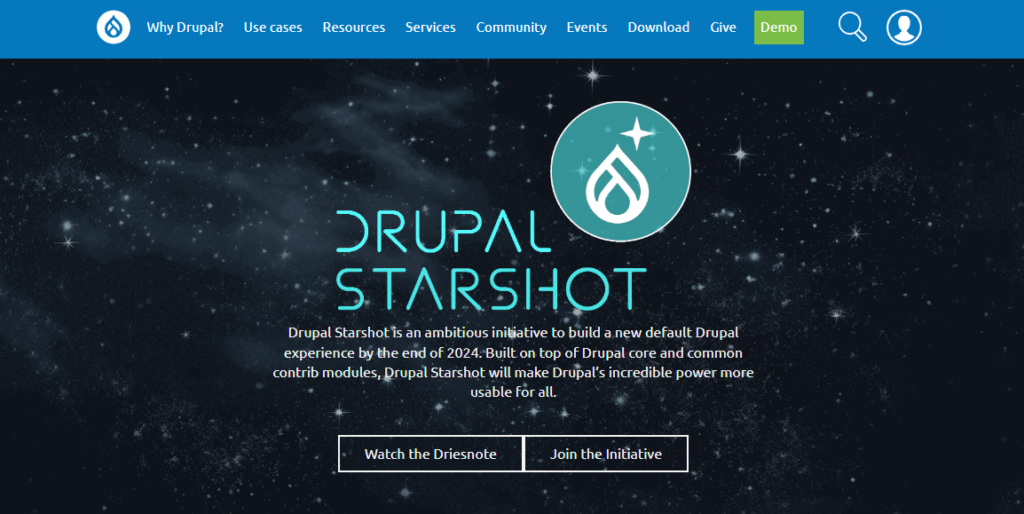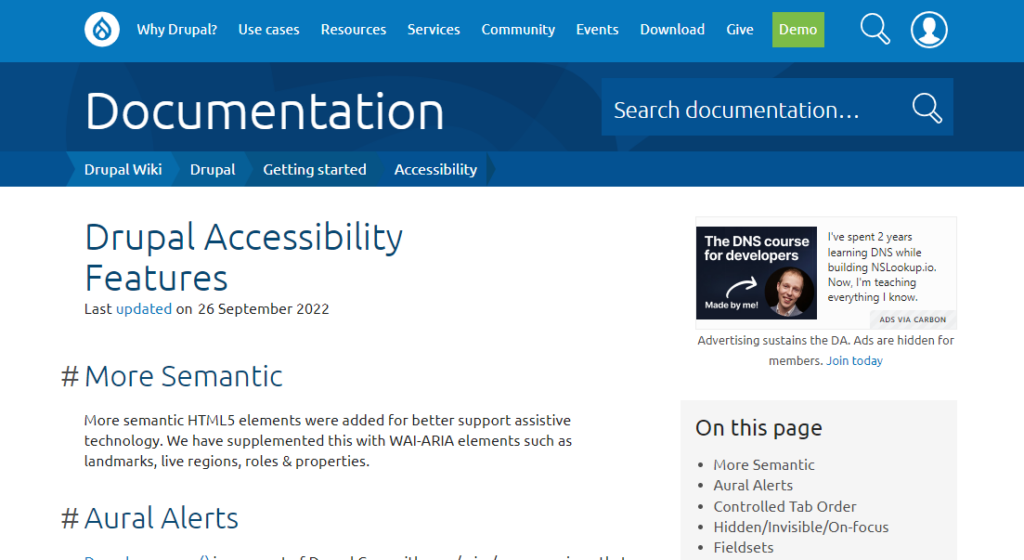Brands that want a robust website development platform that prioritizes accessibility.
Drupal is regarded as an inclusive community, ensuring that people with disabilities can access online and digital assets.
ADA lawsuits are rapidly increasing and no one is immune from the law – even big names in different industries face these lawsuits.
No matter what platform you use to build and maintain your website, you must make it ADA compliant. It will not only help you avoid lawsuits but conduct your business responsibly too.
In this post, we are discussing everything you need to know about ADA compliance and how it can be applied on Drupal.
The Web Content Accessibility Guidelines (WCAG), which all accessibility standards are based on, applies to both web pages and web applications, including native and hybrid apps. These guidelines provide detailed instructions on how website and app owners can make their platforms accessible to users with varying disabilities, ensuring they are not discriminated against in day-to-day life.

WCAG forms part of the Web Accessibility Initiative (WAI) (1) of the World Wide Web Consortium (W3C) (2). This initiative was created to ensure that disabled users don’t encounter any barriers when browsing websites and engaging with mobile apps, which are now an essential part of our lives.
According to Title 3 of the ADA, businesses are required to make modifications in order to accommodate people with disabilities. Despite the fact that websites weren’t originally named in the ADA, recently, courts have ruled that they should be included.
Before we discuss how to make your Drupal website accessible, let’s get to know the platform.

Drupal is content management software that can be used to build websites and apps. It’s also open-source software (3), which means everyone can inspect, modify, and enhance it.
Due to its reputation, many renowned firms and government organizations use Drupal to build their sites.
They also have different hosting partners for Drupal-based websites, which are:
Overall, Drupal is a well-known brand and is used by many developers and businesses.
Brands that want a robust website development platform that prioritizes accessibility.
Brands that don’t have a lot of technical resources and would rely heavily on support.
In this section, we’ll discuss Drupal’s stance on accessibility.

Durpal is committed to ensuring that all features of the platform adhere to WCAG 2.1 and ATAG 2.0 guidelines.
Drupal takes accessibility seriously and has created several guides on it, including their Accessibility handbook and theme guide. The site even offers accessible modules that website owners can download for their websites.
Some of the platform’s accessibility features include:
A Fast and Efficient Way to Comply with Web Accessibility Guidelines
Our top-recommended web accessibility solution is accessiBe. This advanced AI-powered tool makes it easier to apply the latest WCAG standards to your site by simply adding a line of code to the back-end.
Drupal modules consist of code that extends Drupal’s functionality. You’re able to turn the functionality on by installing the module, and you can turn it off by uninstalling the module.
However, the more modules you install, the more time it takes to build and load pages on your site. It’s also important to uninstall modules you don’t need.
Downloading the Drupal core provides modules for different features, such as:
You can use modules by other people or build your own.
Drupal incorporates accessibility tools in its core code, beginning with Drupal 7.

From Module 7, the code has various accessibility advancements, ensuring that your Drupal website complies with WCAG 2.0. Additionally, the organization has committed to making its older version ADA compliant.
Thus, when you build a website using Drupal, it meets ADA and WCAG guidelines.
However, keep in mind that you may compromise your website’s compliance when you upload customized content, including additional modules, images, and even proper color contrast.
It’s essential to keep up with accessibility standards to reduce your risk of ADA compliance lawsuits.
You can check your Drupal site’s accessibility by doing the following:
1) Know which modules to use on your website.
Drupal modules are accessible starting from Module 7. These have various accessibility changes in them that can greatly help with website accessibility.
Some of the changes in Module 7 include improvements in Forms API and screen reader compatibility.
2) Perform an accessibility audit on your website.
An accessibility audit enables you to analyze how accessible your digital products and services are. Conducting regular website audits also helps you plan how to deal with accessibility issues.
You can do this through Accessibility Checker, a free website auditing service.
With an ADA-compliant Drupal website, you can make your digital assets completely accessible to people with disabilities. It also helps you reduce your risk of being sued and you can promote your brand as inclusive.
Say you’ve performed the website audit and you’ve picked up on a few accessibility issues. If that’s the case, you must make your Drupal website ADA compliant.
Here’s how:
Modules are code that extend the functionality of Drupal. These help you achieve ADA compliance on your website more easily.
There are many modules that you can install for accessibility – the latest module is Drupal 9.
You can find Drupal modules here.
Accessibility plugins help you make your website more accessible and ADA compliant. These also make your website faster and simpler to use.
There are also other benefits associated with accessibility plugins and widgets, including improved SEO and higher page relevance.
If you want to learn more about accessibility plugins, you can read our review here.
A number of technology brands have created automated web accessibility solutions to make it easier for businesses to comply. You can use one of these services on your Drupal site too.
The solutions we most recommend include accessiBe, and Userway.
 accessiBe: Our top recommendation
accessiBe: Our top recommendationaccessiBe is one of the most talked-about web accessibility tools available today. It helps take a lot of the manual work out of adhering to ADA and WCAG standards by making it quicker and easier to identify web accessibility issues on your site.




UserWay is trusted by thousands of leading brands that want to create a more inclusive experience for their online users. With the help of an easy-to-use accessibility overlay, it’s never been easier to ensure your Magento site is compliant with some of the top ADA requirements.




The accessiBe Partnership Program makes it that much easier to develop accessible and compliant websites at a more affordable rate. Differentiate yourself from your competitors by adding ADA compliance to your agency’s offering. The program is open to agencies of all sizes across several industries, giving you access to exclusive perks and discounts that benefit your business and your clients.
Learn More About the Program Here.
If you use module 7 on your Drupal site, you’re already one step closer to being ADA compliant.
There are also other ways to ensure ADA compliance and accessibility, like regular website audits and following the latest ADA checklist.
Don’t forget to check your website for compliance issues regularly, especially after you modify a website.
Lastly, using a third-party ADA compliance service can make it even easier to be ADA compliant.
You can kickstart your accessibility journey by auditing your Drupal site on Accessibility Checker
Liked this article? Find more insightful resources below: